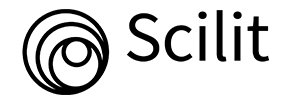
Journal Basic Info
- Impact Factor: 1.989**
- H-Index: 6
- ISSN: 2637-4625
- DOI: 10.25107/2637-4625
Major Scope
- Surgery & Surgical Research
- Laparoscopic Surgery
- Oral & Maxillofacial Surgery
- Cardiovascular Surgery
- Vascular Surgery
- Surgical Procedures
- Emergency Surgery
- Gastroenterological Surgery
Abstract
Citation: World J Surg Surg Res. 2021;4(1):1331.DOI: 10.25107/2637-4625.1331
A Comparative In Vitro Biomechanical Investigation of a Novel Bilateral Linear Fixator vs. Circular and Multiplanar Epoxy-Pin External Fixation Systems Using a Fracture Model in Buffalo Metacarpal Bone
Prasoon Dubey, Hari Prasad Aithal*, Prakash Kinjavdekar, Amarpal, Prakash Chandra Gope, Madhu Doddhadasarahalli Nanjappa, Rohit Kumar, Sivanarayanan Thangalazhi Balakrishnan, Abhijit Motiram Pawde and Malik-Mohammad-Shams-uz-Zama
Department of Surgery, Indian Veterinary Research Institute, India
*Correspondance to: Hari Prasad Aithal
PDF Full Text Research Article | Open Access
Abstract:
Objectives: Comparative evaluation of in vitro biomechanical properties of a newly developed Bilateral Linear External Fixation Device (BLF), Circular External Fixator (CEF) and Multiplanar Epoxy-Pin Fixation System (EPF) in a fracture model. Methods: A novel design of the BLF comprising of a pair of side bars (14 mm diameter) with threads carved in opposite directions (pitch 2 mm) on both sides from the centre, and multiple fixation bolts, which could be secured at desired levels, was developed using stainless steel alloy. Using buffalo metacarpal bones, different fixator constructs were prepared using a fracture model with 2 mm gap. The intact metacarpal bone, BLF-bone construct, CEF-bone construct and EPF-bone construct were subjected to axial compression (n=4 each) and craniocaudal 3-point bending (except CEF-bone construct, n=4 each) using a Universal Testing Machine. Load-deformation graphs were plotted and different mechanical parameters were recorded/calculated and compared between the constructs. Results: The BLF was very versatile; it allowed the placement of fixation pins at desired levels and allowed bone reduction or compression by rotating the side bars in opposite directions even after bone fixation. EPF was the simplest. Under compression, BLF construct showed significantly higher mechanical strength than CEF and EPF constructs. When loaded under 3-point bending, no significant difference in the mechanical properties was seen between BLF and EPF constructs. Clinical Significance: The newly designed BLF is adequately strong, and can be used to treat long bone fractures in animals weighing up to 350 kg. EPF, though the weakest among the fixator constructs tested, was found to provide sufficiently rigid bone fixation and may be effective in animals weighing up to 100 kg.
Keywords:
External skeletal fixation; Biomechanical study; Circular external fixation; Bilateral linear fixator; Epoxy-pin fixation system
Cite the Article:
Dubey P, Aithal HP, Kinjavdekar P, Amarpal, Gope PC, Nanjappa MD, et al. A Comparative In Vitro Biomechanical Investigation of a Novel Bilateral Linear Fixator vs. Circular and Multiplanar Epoxy-Pin External Fixation Systems Using a Fracture Model in Buffalo Metacarpal Bone. World J Surg Surgical Res. 2021; 4: 1331..













